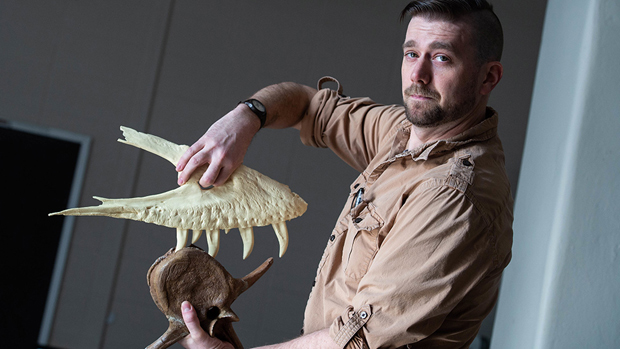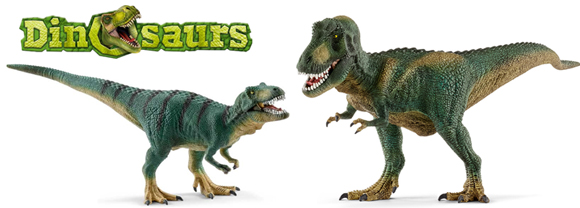New research published in the on-line academic journal “PeerJ” suggests that the bite of a juvenile T. rex was strong enough to puncture bone.
University of Wisconsin Oshkosh palaeontologist Joseph Peterson in collaboration with Shannon Brink, formerly at Wisconsin but now a student at East Carolina University along with Jack Tseng (University of Berkeley, California), tested the bite force that can be generated on the tip of a tooth from a teenage T. rex. They discovered that even though the tyrannosaur was far from fully grown, it could generate a bite force of up to 5,641 newtons, that’s much higher than an adult male lion (Panthera leo) and more than has been estimated for the giant abelisaurid Carnotaurus (C. sastrei).
In fact, this bite force estimate for a T. rex believed to have been around thirteen years of age is comparable to the calculated bite forces of many adult meat-eating dinosaurs such as Allosaurus fragilis.

Where did Juvenile Tyrannosaurs Fit in Late Cretaceous Ecosystems
Whilst there has been quite a lot of research on the bite force potential of adult meat-eating dinosaurs, particularly tyrannosaurs, much less work has been undertaken to assess the bite forces generated by juveniles. By gaining a better understanding of the power of the jaws of these sub-adult predators, then palaeontologists can infer important information about their behaviour such as hunting strategies and preferred prey.

Crunching Cow Bones
In order to test the bite force, a replica of a tooth from a juvenile T. rex was mounted onto a mechanical testing frame used in the University’s engineering and science block. Numerous experiments were then carried out to see if the tooth could penetrate and crack the leg bone of a cow. Based on seventeen successful attempts to match the depth and shape of penetration marks identified in the fossil record, the researchers determined that a thirteen-year-old T. rex could have exerted up to 5,641 newtons of force, that’s somewhere between the bite force exerted by a modern-day hyena and a crocodile.
Impressive as it is, after all, we humans can muster a bite force across our incisors of around 300 newtons, the juvenile T. rex had a much weaker bite than that estimated for an adult. Some scientists have calculated that an adult T. rex could generate a bite force in excess of 35,000 newtons, easily enough pressure to shatter the bones of a hadrosaur or a Triceratops.

The study reveals that juvenile T. rexes were developing their biting techniques and strengthening their jaw muscles to be able crush bone once their adult teeth came in.
Commenting on the significance of this study, Joseph Peterson stated:
“This actually gives us a little bit of a metric to help us gauge how quickly the bite force is changing from juvenile to adulthood, and something to compare with how the body is changing during that same period of time. Are they already crushing bone? No, but they are puncturing it. It allows us to get a better idea of how they are feeding, what they are eating. It is just adding more to that full picture of how animals like tyrannosaurs lived and grew and the roles that they played in that ecosystem.”
To read an earlier article that examined the bite force of tyrannosaurs: New Research into T. rex Bite Force.
The scientific paper: “Bite force estimates in juvenile Tyrannosaurus rex based on simulated puncture marks” by Joseph E. Peterson, Z. Jack Tseng and Shannon Brink published in PeerJ.
Visit the Everything Dinosaur website: Everything Dinosaur.






Leave A Comment